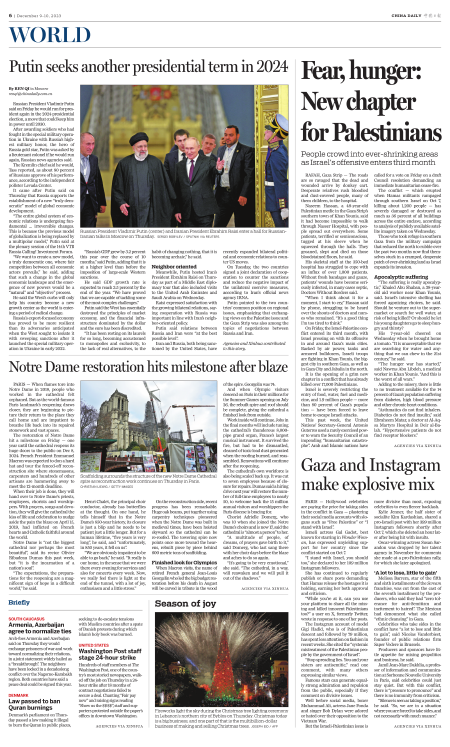RAFAH, Gaza Strip — The roads are so ravaged that the dead and wounded arrive by donkey cart. Desperate relatives rush bloodied and dust-covered people, many of them children, to the hospital.
Naseem Hassan, a 48-year-old Palestinian medic in the Gaza Strip's southern town of Khan Younis, said it had become impossible to walk through Nasser Hospital, with people spread out everywhere. Some patients, terrified or semiconscious, tugged at his sleeve when he squeezed through the halls. They groaned, slept and died on those bloodstained floors, he said.
His skeletal staff at the 350-bed hospital has struggled to cope with an influx of over 1,000 patients. Without fresh bandages and gauze, patients' wounds have become seriously infected, in many cases septic, Doctors Without Borders said.
"When I think about it for a moment, I start to cry," Hassan said by phone, struggling to be heard over the shouts of doctors and nurses who remained. "It's a good thing I'm too tired to think."
On Friday, the Israel-Palestine conflict entered its third month, with Israel pressing on with its offensive in and around Gaza's main cities. Backed by air power, tanks and armored bulldozers, Israeli troops are fighting in Khan Younis, the biggest city in southern Gaza, as well as in Gaza City and Jabalia in the north.
It is the opening of a grim new chapter in a conflict that has already killed over 17,000 Palestinians.
Israel is severely restricting the entry of food, water, fuel and medicine, and 1.9 million people — more than 80 percent of Gaza's population — have been forced to leave home to escape Israeli attacks.
This past week, the United Nations' Secretary-General Antonio Guterres used a rarely exercised power to warn the Security Council of an impending "humanitarian catastrophe". Arab and Islamic nations have called for a vote on Friday on a draft Council resolution demanding an immediate humanitarian cease-fire.
The conflict — which erupted when Hamas militants rampaged through southern Israel on Oct 7, killing about 1,200 people — has severely damaged or destroyed as much as 36 percent of all buildings across the entire enclave, according to analysis of publicly available satellite imagery taken on Wednesday.
Those who took refuge in southern Gaza from the military campaign that reduced the north to rubble over the past two months now find themselves stuck in a cramped, desperate patch of ever-shrinking land as Israel expands its invasion.
Apocalyptic suffering
"The suffering is really apocalyptic," Khaled Abu Shaban, a 38-year-old aid worker near Khan Younis, said. Israel's intensive shelling has forced agonizing choices, he said. Should he venture out to the supermarket or search for well water, at risk of being killed? Or should he let his young daughters go to sleep hungry and thirsty?
His 7-year-old cheered on Wednesday when he brought home a tomato. "It is unacceptable that we are searching for water and anything that we can chew in the 21st century," he said.
"The hunger war has started," said Nawras Abu Libdeh, a medical worker in Khan Younis. "And this is the worst of all wars."
Adding to the misery, there is little to no treatment available for the 14 percent of Gaza's population suffering from diabetes, high blood pressure and other chronic heart conditions.
"Asthmatics do not find inhalers. Diabetics do not find insulin," said Ebraheem Matar, a doctor at Al-Aqsa Martyrs Hospital in Deir al-Balah. "Hypertensive patients do not find receptor blockers."

